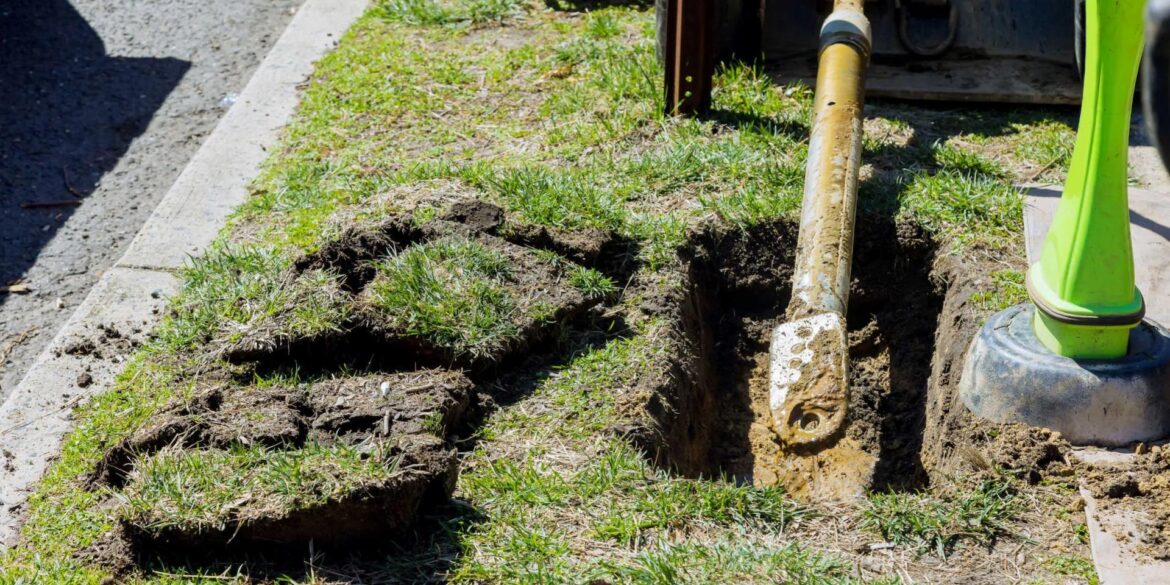Underground installations like pipes and cables are crucial for modern infrastructure. However, laying these utilities traditionally involves digging large trenches, which can disrupt the landscape, affect traffic, and require extensive repairs. Moling services offer a more efficient, less invasive alternative for installing underground utilities. In this article, we’ll explore what moling services are, how they work, and why they are becoming a popular choice for both residential and commercial projects.
What Is Moling?
Moling is a trenchless technology used to install pipes, cables, and other utilities beneath the ground without the need for large-scale excavation. This method uses a specialised pneumatic machine, called a mole, to create a path underground by displacing soil. The mole works by boring horizontally through the earth, allowing the installation of utilities with minimal surface disruption.
How Does Moling Work?
The moling process can be broken down into a few simple steps:
- Preparation: First, small entry and exit pits are dug at the starting and ending points of the underground installation.
- Mole Insertion: A pneumatic moulding machine shaped like a bullet is placed into the entry pit. This machine operates by applying controlled bursts of compressed air, which propel it forward through the soil.
- Soil Displacement: As the mole moves, it compacts the surrounding soil, creating a tunnel. This displaced soil creates a path for utilities to be laid.
- Utility Installation: Once the tunnel is created, pipes or cables can be pulled through the borehole without disturbing the surface above.
This method is ideal for small to medium-sized projects, such as installing water pipes, gas lines, or fibre optic cables beneath gardens, driveways, or roads.
Advantages of Using a Moling Service
Moling services offer several benefits compared to traditional trenching methods:
- Minimal Disruption: Moling avoids the need for large-scale digging, meaning less damage to lawns, driveways, or roads. This is especially beneficial for projects in residential areas where aesthetics and minimising disruption are priorities.
- Cost-Effective: By reducing the amount of excavation required, moling can cut down on labour, machinery costs, and restoration work, making it a more budget-friendly option.
- Faster Installation: Moling allows for quicker project completion. With less time spent on excavation and site restoration, utilities can be installed more efficiently.
- Environmentally Friendly: Because it requires less digging, moling reduces the environmental impact of construction projects, preserving soil structure and plant life.
- Versatility: Moling services can be used in various settings, including urban, rural, and suburban areas. It’s effective for installing utilities beneath roads, buildings, gardens, and even water bodies.
Common Applications of Moling Services
Moling is a versatile method with numerous practical applications, including:
- Water and Gas Pipe Installations: Homeowners and businesses often use moling services to install or replace water and gas lines, as it allows for quick installation with minimal damage to the surrounding landscape.
- Electrical Cables: For homes, commercial buildings, or public utilities, moling is an effective way to install underground electrical cables without causing extensive disruption to the surface.
- Telecommunications: As demand for high-speed internet increases, moling services are being used to lay fibre optic cables underground, ensuring connectivity without needing large-scale excavation.
Why Choose Moling Over Traditional Methods?
Choosing a moling service for your underground installation offers distinct advantages over traditional methods. With traditional trenching, you often face long-term inconvenience due to road closures, property damage, and potential environmental harm. In contrast, moling allows for precise, minimally invasive work, reducing the need for extensive repairs and clean-up once the project is complete.
Moreover, moling’s flexibility means it can be used in areas with limited space or access, such as narrow streets or busy city centres, where traditional trenching might not be practical.
When Should You Consider Moling Services?
Moling services are best suited for projects that require underground installations with minimal surface disruption. Here are some scenarios where moling could be the right choice:
- Residential Projects: Installing water pipes beneath driveways, sidewalks, or gardens without digging up the entire area.
- Commercial Properties: Laying utility lines beneath parking lots or buildings while keeping the business operational during the installation.
- Public Infrastructure: Installing cables, water, or gas lines in urban areas where digging up roads would significantly inconvenience the public.
If you’re planning a utility installation and want to avoid the hassle and expense of traditional excavation, a moving service might be the perfect solution.
Conclusion
Moling services offer a modern, efficient solution for underground utility installations. By reducing surface disruption, speeding up the installation process, and cutting costs, moling is quickly becoming a preferred method for homeowners, businesses, and utility companies. Whether installing a new water line under your garden or laying fibre optic cables beneath city streets, a moling service can provide a practical, eco-friendly solution.
If you’re considering an underground installation project, moling could be the answer to achieving a seamless, minimally invasive outcome.


